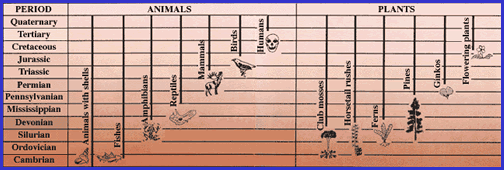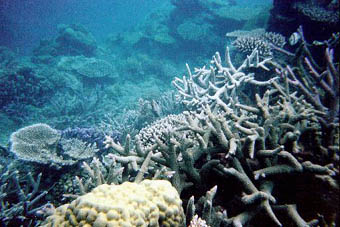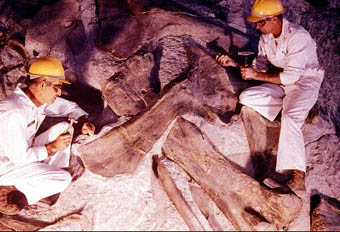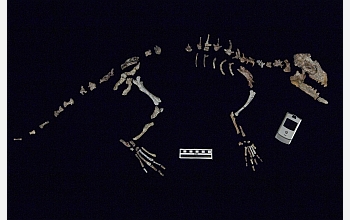Evidence of Evolution
Click on image for full size
U.S. Geological Survey
Fossil Evidence for Macroevolution
The fossil record provides countless examples of macroevolution over large amounts of geologic time. Different types of animals dominated different time periods through Earth history. Some are still alive today, but most are not.For example, trilobites, crinoids and brachiopods dominated shallow water environments during the Paleozoic era (approximately 540 million years ago to 250 million years ago). Rocks that were once part of the shallow marine environment of the Paleozoic are peppered with fossils of these creatures that are either extinct or much less common today.
- There are no trilobites alive today but during the Paleozoic these diverse arthropods scurried about, eating the food particles they sifted out of the muddy ocean floor. They are the most diverse group in the fossil record. More than 15,000 species have been identified.
- Crinoids are less abundant today. Only a few hundred species exist now. However, during the Paleozoic these animals, known as sea lilies, were so common that parts of their fossilized skeletons compose entire rocks in locations of the central United States, an area that used to be part of the shallow ocean floor. To avoid predators, modern crinoids either live on the deep ocean floor (up to 6000 meters deep) or tuck themselves into cracks in rocks.
- Brachiopods are still alive today but are much less common. These sea creatures, housed in shells like clams and equipped with little nets for collecting food from seawater, were very diverse during their Paleozoic heyday, with sixteen or more orders and thousands of species.
Could you imagine if these were the animals that filled the sea next to your favorite beach? What if a trilobite scuttled across your foot as you waded in the shallow water? There would be no clam or snail shells to collect on the shore, but brachiopod shells and crinoids skeletons would be common. Today, shallow marine environments are dominated by mollusks such as clams and snails. Tropical areas have reefs dominated by coral animals, relatives of jellyfish, who construct elaborate structures made of limey rock. This environment has seen drastic change in its living inhabitants through geologic time. Since the fossils of those former inhabitants have been preserved in rocks, scientists can readily reconstruct what the shallow oceans were like millions of years ago during the Paleozoic.
The shallow marine ecosystems are not the only ones to preserve a record of change in life through time. Fossils provide a record of biological evolution in other environments too. Paleontologists study the fossils that were preserved within sedimentary rocks from various times of Earth's history and many locations around the world.












